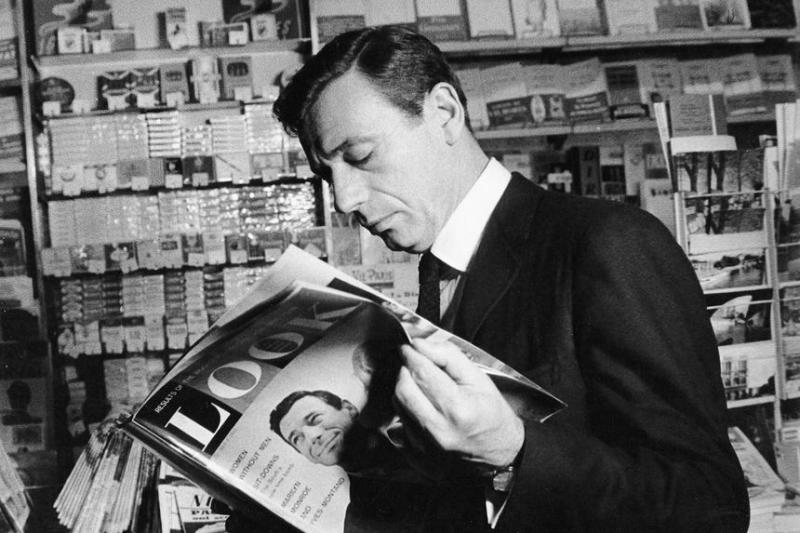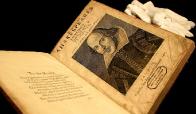‘Look’ Review: The Big Picture
By: By Edward Kosner



America’s great glossy magazines were once at the pulsing heart of popular culture. Millions of readers devoured their copies of Life, Look, the Saturday Evening Post, Collier’s, the New Yorker, Reader’s Digest, Time, Newsweek, Vogue, Harper’s Bazaar, Ladies’ Home Journal and more. They were rewarded with provocative stories, stunning photographs, illustrations by popular artists like Norman Rockwell, and beguiling ads for sleek new cars and other prizes of the booming consumer economy.
That world has all but disappeared. Most of those plump titles are gone, and the survivors often look like wraiths. It’s a shame because the slick magazines perfected forms of popular journalism, short fiction and fashion coverage that informed and entertained the country, and made fortunes for their proprietors—no small feat.
For decades, Look was the biggest-selling magazine in America. It sold nearly 8 million large-format copies every two weeks, routinely ran 200 or more pages per issue, and had ad revenue alone of more than $677 million a year in today’s money. But Look perished in the mass-magazine extinction of the late 1960s and early ’70s. Today, it is all but lostto memory: None of the nearly 900 issues it published over 34 years is digitized for posterity.
Look has now been downloaded from magazine heaven by Andrew Yarrow, a reporter turned academic and the author of five other books. His lavishly illustrated “Look: How a Highly Influential Magazine Helped Define Mid-Twentieth-Century America” aims not only to rescue the glossy from obscurity but to burnish its reputation for courageous journalism. In the process, he unreels a compact social history of the country from the Depression to the dawn of the 1970s with all its pleasures, pain, breakthroughs and foibles.
Look was created in 1937 by Gardner (Mike) Cowles Jr., a Midwestern newspaper publisher, just a year after Henry Luce started Life, with which it competed and was compared—generally to Look’s disadvantage. Look, Mr. Yarrow claims, “was not the milquetoast mouthpiece of middle America or bland copy of Life.” Rather, he writes, it was an “iconoclastic—even radical—magazine” full of “powerful photojournalism,” “provocative reporting” and “tough-minded optimism.”
To make his case, he has pored over yellowing back issues and microfilm in university and other libraries, even retrieved some copies from internet dealers. Mr. Yarrow is a zealous researcher. It’s hard to imagine that he’s failed to mention any Look article on any subject from Aristotle (philosopher, Greek) to Zappa (rock musician, American), the work of any photographer from Richard Avedon to the teenage Stanley Kubrick (before he became a movie director). His encyclopedic approach can be tedious—especially when he runs down old mastheads. But he does unearth many treasures, including a batch of gee-whiz futuristic piffle the ever-enthusiastic Look peddled to its more credulous readers.
Mike Cowles was a liberal Republican, and his magazine reflected his values. It was a booster of propulsive postwar capitalism and an early crusader for civil-rights progress; it was also staunchly internationalist. The magazine both reflected and encouraged American society’s evolution from the midcentury model of the nuclear family, with the husband-breadwinner and the wife a nurturing homemaker. In 1971 Look profiled a pioneering gay couple married secretly by their minister, and wrote positively about the lives of single women and divorcees, the “Youth Quake” of baby boomers, even hippies and psychedelia.
Wendell Willkie and later Adlai Stevenson toured world capitals for Look and wrote detailed reports. The intrepid William Bradford Huie went to Mississippi and got two of Emmet Till’s acquitted murderers to brag about how they did it. Sam Castan covered Vietnam and was killed in a skirmish with the Viet Cong while reporting a story about the last thoughts of dying soldiers. Another Look writer conducted a four-hour interview with the young Fidel Castro aboard Castro’s plane cruising over the Caribbean and found him “idealistic, impatient, impulsive, thin-skinned, erratic, and naïve.” A 1970 issue featured pieces by conservative champion William F. Buckley Jr. on “Why We Need a Black President in 1980” and feminist crusader Gloria Steinem on“Why We Need a Woman President in 1976.”
This provocative content as often as not ran beneath covers flaunting Hollywood beauties like Marilyn Monroe, Elizabeth Taylor and Grace Kelly or bikini babes splashing in the surf. And the magazine was obsessed with the Kennedys: Between 1959 and ’71, Look ran no fewer than 120 stories about the family. (Seven pieces carried JFK’s byline and seven more his brother Robert’s.) Over the years, it also churned out a remarkable stream of tomorrowland claptrap. “San Francisco to New York in 75 minutes!” promised a 1955 article about a coming 8,000-mph rocket plane. A 1971 piece envisioned “a fully formed baby . . . ‘decanted’ from an artificial womb” by the year 2000. In 1953, Look proclaimed that polio, heart disease and cancer were being “conquered.” The media theorist Marshall McLuhan predicted in 1967 that “homosexuality may fade out.”
Look itself faded out in 1971, its circulation and ad revenue ravaged by network television. The internet threat was still decades away. Mr. Yarrow ends his book with a moving cri de coeur. “Look and other mass media,” he writes, “informed people rather than riling them up or gratuitously scaring them. . . . Media [are] now a vast, disorganized library of unedited and largely incoherent content. . . . What ended was not just a great magazine or a type of journalism but a faith that America could be made better.”
Mr. Kosner was the editor of Newsweek, New York, Esquire and the New York Daily News.







How can we ever forget those magazines?
That tobacco smells so good.